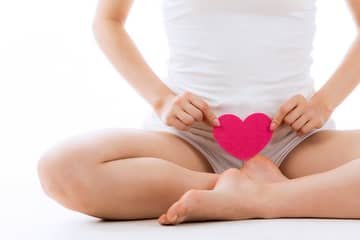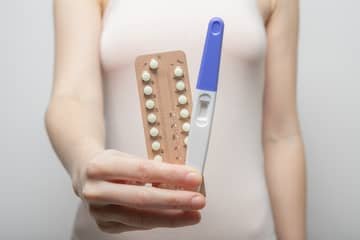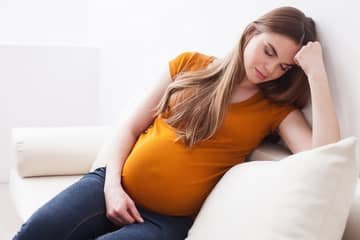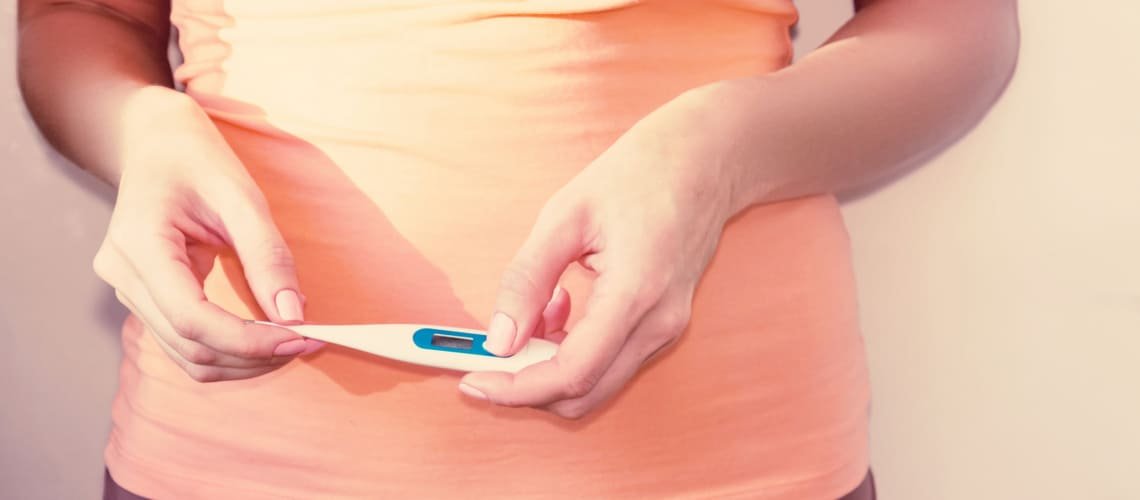
Egg implantation - pain in the lower abdomen, blood, discharge and other symptoms
If you and your partner are one of those couples whose goal is to bring a child into this world, then you will surely be interested in what actually implantation an egg means. First-time parents often confuse this concept with the actual fertilization of the egg. However, in reality, the implantation of the egg in the uterus is the process that definitively decides whether the fertilization of the egg was successful. If you want to know if it is possible to feel fertilization or how long it takes for the egg to implant in the uterus, you can read about it in the following article.
Explaining the entire process of an egg implantation is complicated in itself, and in order to understand it, it is important to know what precedes it. The very fertilization of a woman's egg by a man's sperm is important. However, this does not automatically mean that the woman will become pregnant, for this it is still necessary for the egg to successfully implant in the uterus (nidation). The whole process has its own rules and specifics, which the future mother can notice and it is good to know them. It is important for a woman to always carefully monitor the signals of her own body, because thanks to this, she can have the desired result, pregnancy, and a higher probability of success.
Fertilization of the egg and the ideal time of the cycle - ovulation
The actual process of implantation of the egg in the uterus begins only after the woman's egg is successfully fertilized by the man's sperm. Fertilization occurs at a certain time after intercourse. In this phase, the fusion of the male and female sex cells occurs and the exchange of genetic material occurs. This process ideally occurs during the follicular phase of the menstrual cycle, when a woman ovulates. The egg is wrapped in the so-called the follicle, which enlarges during the cycle along with the egg and produces fluid - Graafian follicle. After maturation, around the 14th day of the cycle, the follicle disintegrates (turns into a corpus luteum) and the dominant egg is released. The mentioned state of ovulation occurs in a woman.
The dominant egg travels through the fallopian tube to the uterus, and during this journey lasting approximately 12 to 24 hours, it is important that it meets the dominant sperm, which penetrates the egg's shell. Only the fastest and most vital sperm can do it. The lifespan of sperm is approximately 48 to 72 hours, which means that fertilization can be successful even if the ejaculate was released 2 or 3 days before ovulation. If this happens, the fertilized egg travels further into the uterus.
The ideal time for fertilization, or trying to get pregnant is roughly halfway through a woman's current menstrual cycle. However, it depends on the regularity of the woman's cycle and its length. Especially in young women, the length of the cycle can be less regular, therefore the time of ovulation can also vary. Within a regular 28-day menstrual cycle, ovulation occurs around the 14th day, which are the most fertile days of the cycle. It is possible to find out when a woman has fertile days (ovulation) with the help of ovulation tests, which can be bought at a pharmacy. Statistically, it is best to have sexual intercourse 3 days before ovulation or 24 hours after it. Ovulation is often accompanied by pain in the lower abdomen or mucous discharge. One of the symptoms is increased sexual libido, but this is very individual in the case of each woman.
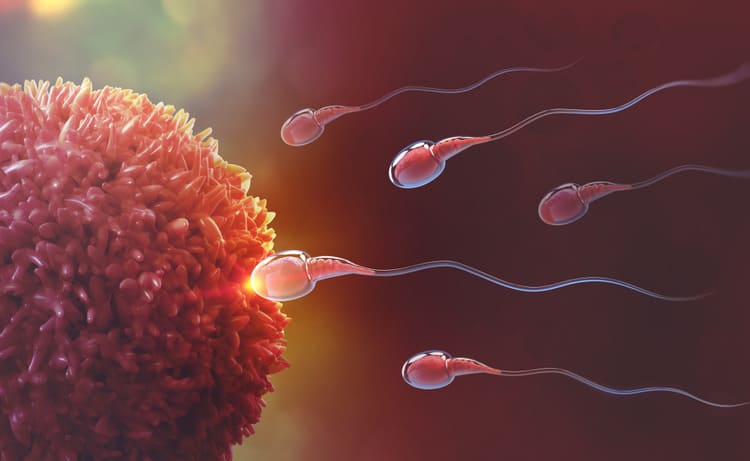
Can I feel fertilization?
The actual fertilization of the egg, i.e. the moment when the dominant male sperm and the female egg successfully meet, is not felt. The whole process takes place in the fallopian tube and the uterus, it is important that the female egg meets the male sperm and their successful fusion occurs. The typical symptoms that a woman can feel can only be discussed in connection with the implantation of the egg in the uterus.
Implantation of the egg in the uterus - duration and process
The implantation of the egg in the uterus is crucial for pregnancy, therefore the fusion of the egg and the sperm does not automatically mean success. Hormones, gestagens (progesterone), in the luteal phase of the cycle ensure that the lining of the uterus is hospitable to the fertilized egg, thanks to which there is a prerequisite for successful implantation. And how long does it take for a fertilized egg to implant in the uterus?
- After the union of the egg and the sperm, a cell called a zygote is formed. It is the carrier of genes and travels towards the uterus. At this stage of the migration of the fertilized egg, it is important that it does not get stuck. There is a risk of ectopic pregnancy, which usually ends in the death of the fetus, but it is also a risk for the woman herself (bleeding into the abdominal cavity, rupture of the fallopian tube, inflammation).
- After approximately 20 to 30 hours , miotic cell division occurs in the zygote, while the number of chromosomes remains (23 from the father and 23 from the mother). Division creates a blastomere. The fertilized egg now consists of 8 cells.
- In the next phase of migration, the egg reaches the uterus, and by further division, the egg is divided into up to 16 cells. At this stage, it is usually referred to as morula.
- The trophoblast (shell) is separated from the egg by further division, from which the placenta is formed, the purpose of which is the subsequent nutrition of the fetus during pregnancy. In the egg (morula), a hollow nucleus is formed, which is called a blastula. At this stage, the fertilized egg is already in the uterus and gradually turns into a blastocyst, which has a separate outer and inner mass.
- The trophoblast subsequently acts enzymatically on the surface of the uterus, and implantation of the egg (nidation) begins.
- The blastocyst gradually fuses with the uterus (implants) so that the embryo can be properly nourished. Approximately 7 days after fertilization, the blastocyst implants in the uterus and gradually comes into contact with the mother's blood.
- At the same time, the hCG hormone begins to be produced, the increased production of which is a clear signal that the fertilized egg has implanted in the uterus. This whole process takes about 13 days before we can talk about a stable implantation.
- If the egg was implanted successfully, the pregnancy test will record an increased level of the hCG hormone in this phase, the level of which increases significantly in the early stages of pregnancy.
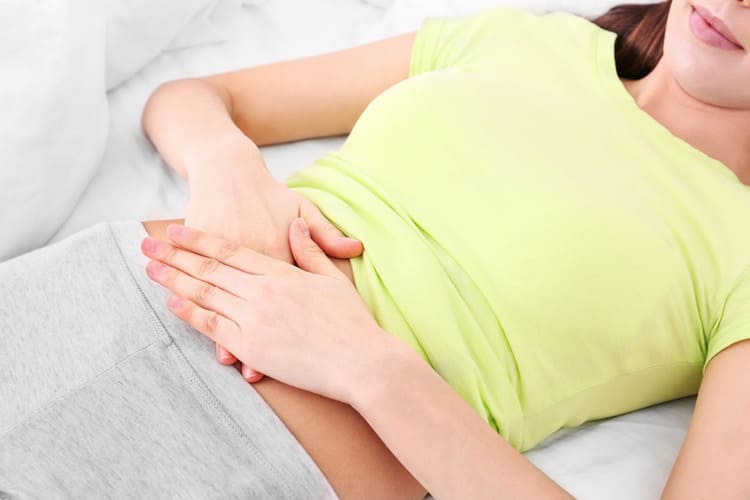
Artificial insemination is one of the possibilities of reproduction. Implantation of the egg after artificial insemination takes place differently, due to the method of fertilization itself, where the eggs are collected and the sperm are collected, with which the egg is fertilized in a controlled manner in laboratory conditions. Subsequently, the embryo is observed in the laboratory for 2 to 5 days. Then the embryo is inserted directly into the uterus (embryo transfer).
How long does it take for an egg to implant in the uterus?
The entire complex process of implantation of a female egg from the moment of fertilization takes approximately 6 to 7 days, while definitive implantation occurs approximately on the 13th to 14th day after fertilization (fusion of sperm and egg), when it is possible to observe an increased level of the hCG hormone and also other symptoms. Until the egg is stably implanted in the uterus, it is necessary to count 5 to 7 days of the migration phase, then approximately 2 to 3 days when it is in the uterus and another approximately 3 days when the blastocyst is definitively implanted in the uterus.
Egg laying and symptoms
Many women in the process of the egg implantation had different feelings and observed different symptoms on themselves. It is important to say that no feelings of egg implantation are a guarantee that implantation is taking place or has taken place with guaranteed success. Many women do not notice some symptoms in the early stages of pregnancy, while others, on the contrary, know their body so well that they can accurately determine that pregnancy is highly probable. So how do I know if the egg has hatched?
The egg implantation and pain in the lower abdomen
Pain in the lower abdomen in the case of implantationing is a very common symptom that many women talk about. Many of them are frightened by this feeling, because it can be a symptom of health complications. Many women confuse pain in the lower abdomen or cramps in the lower abdomen with menstrual pain. This symptom can be deceiving, but compared to menstrual cramps, this pain is rather short-lived and does not return. It can easily be a stabbing, pulling or tingling pain of varying intensity during egg implantation, which, however, is usually one-time. An accompanying symptom is also lower back pain when the egg is implanted.

Egg laying - discharge and blood
Weak discharge or spotting in the early stages of pregnancy is relatively common. When the egg is implanted, the blastocyst disrupts the microvessels of the uterus and the so-called implantation bleeding. It has a light red color. Not dark like during menstruation. This discharge occurs approximately 7 days after ovulation and often signals that fertilization has occurred. Many women often confuse this symptom with menstruation, while it can be a clear indication that an egg has implanted. Such bleeding is weaker, shorter and less intense than when it is a classic discharge during a period. This staining soon stops and lasts only 1 to 2 days. Attention, if the bleeding is intense, in the first trimester it can be a spontaneous abortion or a serious inflammatory disease.
Higher basal temperature during implantationing
Such an ordinary parameter as the body temperature of the body tells about the fact that the implantationing of the egg is taking place or has taken place in your body. Basal temperature is measured immediately after waking up, without getting out of bed for the toilet, food or liquids. You must measure the basal temperature at the same time and under the same conditions. After fertilization, the level of progesterone begins to rise, which can cause body temperature to fluctuate. Usually the body temperature increases by only 0.2 or 0.3 °C compared to the previous day. This can also be a signal that something is happening in the woman's body. In total, the temperature will rise by up to 1 °C compared to the normal temperature. A mild fever may gradually appear. In order to be able to deduce from the temperature whether it may be the process of the egg implantation, it is advisable to measure the temperature a few days before fertilization.
Other symptoms can be considered sensitive breasts, feeling tired, constipation or diarrhea, headaches or nausea or loss of appetite. These symptoms are largely a signal that implantationing has already been successful.

What helps to lay the egg?
Are there vitamins for laying an egg? How to help the successful the egg implantation in the uterus? A frequent argument for not being able to get pregnant is, of course, age. Naturally, age affects the ability to get pregnant for both partners (statistically more for women), but in the same way, even young people may not be able to conceive a child quickly. There can be more reasons. However, it generally helps to implant an egg if a woman observes her fertile days during her cycle. Correct timing is half the battle. If you want to know when you ovulate, buy ovulation tests.
Make sure that your menstrual cycle is regular. Deviations of several weeks are not beneficial and at the same time can portend more serious health problems. Last but not least, overall health and fitness are key. And that in the case of a woman and a man. There are many reasons why fertilization fails, just as the egg fails to implant in the uterus. Prevention in the form of taking vitamins for pregnant women, which also indirectly help with the the egg implantation, are definitely a suitable choice. Do not forget vitamins C, B12, B9 - folic acid, minerals, such as magnesium, calcium or iron.
The egg implantation - experience
In the discussions, women describe the implantationing of the egg as a dull pricking in one point. Such pain is often associated with cysts, so a woman should first of all make sure that she does not have such a problem. Several mothers wrote that they did not feel the implantationing at all or that it coincided with the symptoms of menstruation. It clearly follows that it is individual and some women can feel implantationing, some cannot. You should certainly pay attention to several symptoms and make sure with a pregnancy test.
The most frequent questions - FAQ
Are you interested in the process of the egg implantation in the uterus? Would you like to know what helps to lay an egg? Why does pain appear in the lower abdomen or blood? We believe that our article will answer your questions. If you have additional questions, we will be happy to answer them. If you have your own experience with these processes during pregnancy, we would be happy for your observations and opinions, which you can contribute to the discussion. You can thus advise other readers who are interested in this issue.
How long does it take for the egg to implant in the uterus?
How long do the pains last after nesting?
Can I feel fertilization?
How many days after intercourse can you detect pregnancy?
When does the egg implant in the uterus?
Is it possible to get pregnant during menstruation?
Pridať komentár


